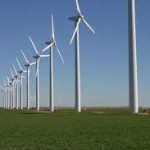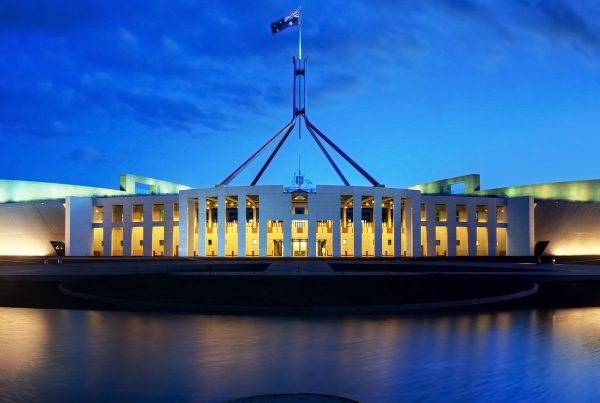The below story amplifies a significant issue for wind farms in Australia. Do wind farms really threaten birds? It seems so. Would you believe there is a place in California that is accused of being ‘the most lethal wind project for birds in the world’ – 1300 dead raptors (eagles, vultures, etc) per year. And that was in 2007! Solution? According to Wikipedia, nearly half of the turbines are being replaced by newer, more bird-friendly models. And there are similar accusations at other windy sites around the world.
Respected journalist, Graham Lloyd, with a lot of environmental experience wrote the piece below. Watch for his followups.
Where eagles dare not fly: Waterloo looms as wind farms power town revolt
by: Graham Lloyd, Environment Editor
From:The Australian April 21, 2012 12:00AM
A DEAD wedge-tailed eagle, chicken eggs without yolks and a dysfunctional village with residents bursting to flee. This is the clean-energy revolution Waterloo-style, where the nation’s biggest wind turbines have whipped up a storm of dissent.
Adelaide University has been drawn into a controversy that threatens to spin out of control after one of its masters students asked residents of Waterloo, 120km north of Adelaide, what they really thought about living near windmills and was knocked over in an avalanche of complaint.
Yesterday, a South Australian Department of Environment and Heritage officer collected the remains of a juvenile wedge-tailed eagle from the base of one of the Waterloo wind farm turbine towers. He said it would be X-rayed and examined to establish the cause of death.
It may help to explain why, according to one local ranger, three wedge-tailed eagle nesting areas identified before the turbines began to operate 18 months ago are no longer active.
Department of Environment and Natural Resources district manager Ian Falkenberg said initial observations of the eagle remains showed a punctured skull and major fractures of the right wing, including a significant break about three inches from the shoulder.
GPS readings showed the remains were located 180m from the base of the tower.
Mr Falkenberg said eagles in the mid-north of South Australia were in lower numbers than in other parts of the state and considered “vulnerable” at a regional assessment level.
He said prior to the wind turbines at Waterloo, there were three eagle territories but was not aware of any of those territories now being active.
According to wind farm operator TRUenergy, there are still active wedge-tailed eagle populations in the hills.
TRUenergy spokeswoman Sarah Stent said: “Eagle monitoring on site of resident population today shows no decrease in bird numbers.”
TRUenergy acquired the Waterloo wind farm last year and has announced a $40 million expansion. It is also planning a wind farm development at Stony Gap. The company insists it has broad community support and certainly the strong backing of the SA government.
Waterloo has become a hotbed of concern among locals, many of whom claim to be suffering ill-effects from the wind turbine development.
They want independent noise measuring and for Senate inquiry recommendations for research into the impact of low frequency noise to be adopted. Some want to be relocated and many want the wind turbines to be turned off at night.
Village resident Neil Daws is concerned his chickens have been laying eggs with no yolks.
Ironically called wind eggs, the yolkless eggs can be explained without wind turbines.
But together with a spike in sheep deformities, also not necessarily connected to wind, reports of erratic behaviour by farm dogs and an exodus of residents complaining of ill health, Waterloo is a case study of the emotional conflict being wrought by the rollout of industrial wind power.
When Adelaide University masters student Frank Wang surveyed residents within a 5km radius of the Waterloo wind turbines he found 70 per cent of respondents claimed they had been negatively affected by the wind development and the noise, with more than 50 per cent having been very or moderately negatively affected.
Mr Wang is concerned that a summary of his results was leaked before it could be peer-reviewed.
Adelaide University vice-chancellor Michael Head has written to TRUenergy in response to company concerns about publication of the summary. “I have looked into this matter and found that the study in question was undertaken by a student as part of a minor thesis for his masters by coursework,” Professor Head said. “This was entirely the student’s own project and not undertaken for or on behalf of the university.”
A university spokesperson said the survey was overseen by a senior lecturer and approved by the University’s Human Research Ethics Committee.
“There is clearly a need for further research that considers all aspects of wind farms and their impact on the community,” the spokesperson said.
Mr Wang told The Weekend Australian the university had been supportive of his research.
“Yes, definitely,” he said. “My supervisor helped me to choose this topic.”
Mr Wang said he was not willing to release his research publicly until after academic peer reviews.
Ms Stent said TRUenergy was not able to judge if Mr Wang’s results were a fair representation of community sentiment in Waterloo.
“It is not our view that the majority of the population is opposed to the wind farm nor dissatisfied with our approach to community engagement,” she said.





